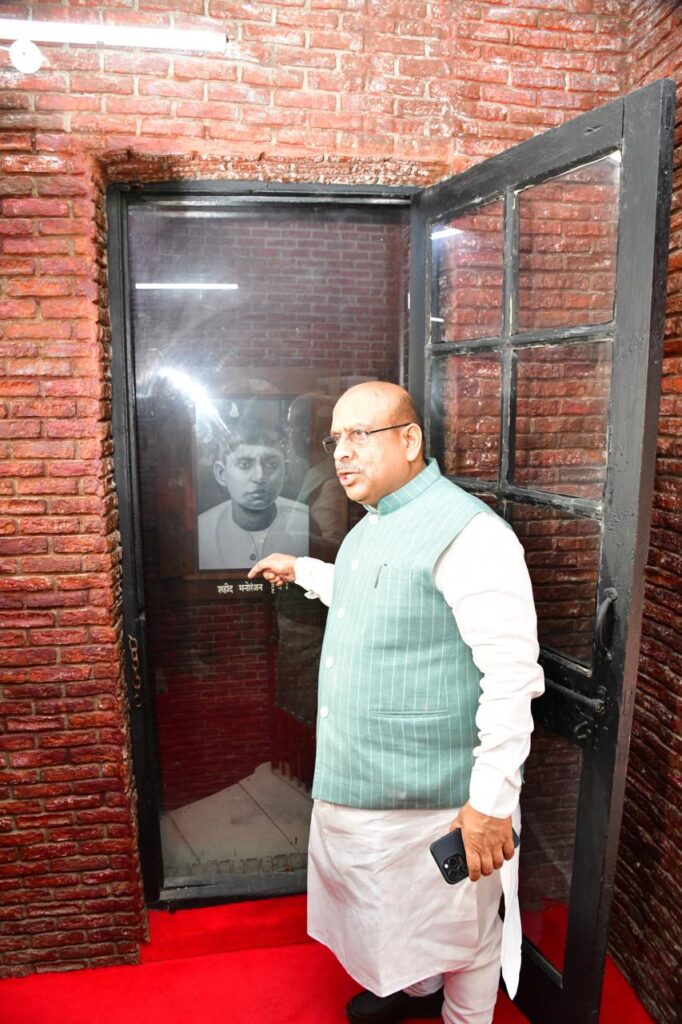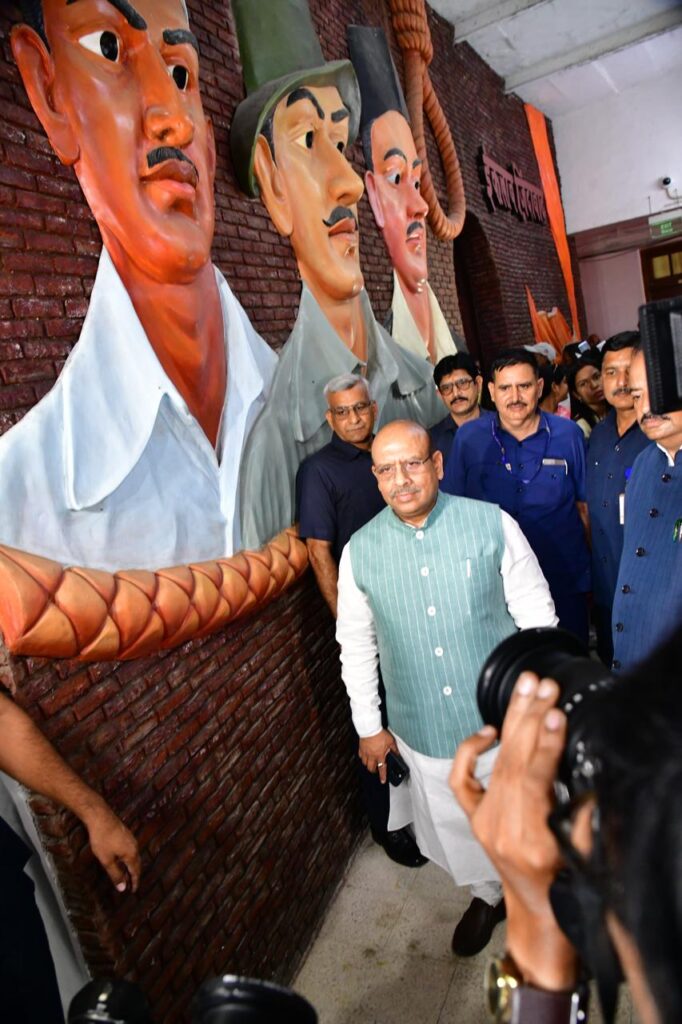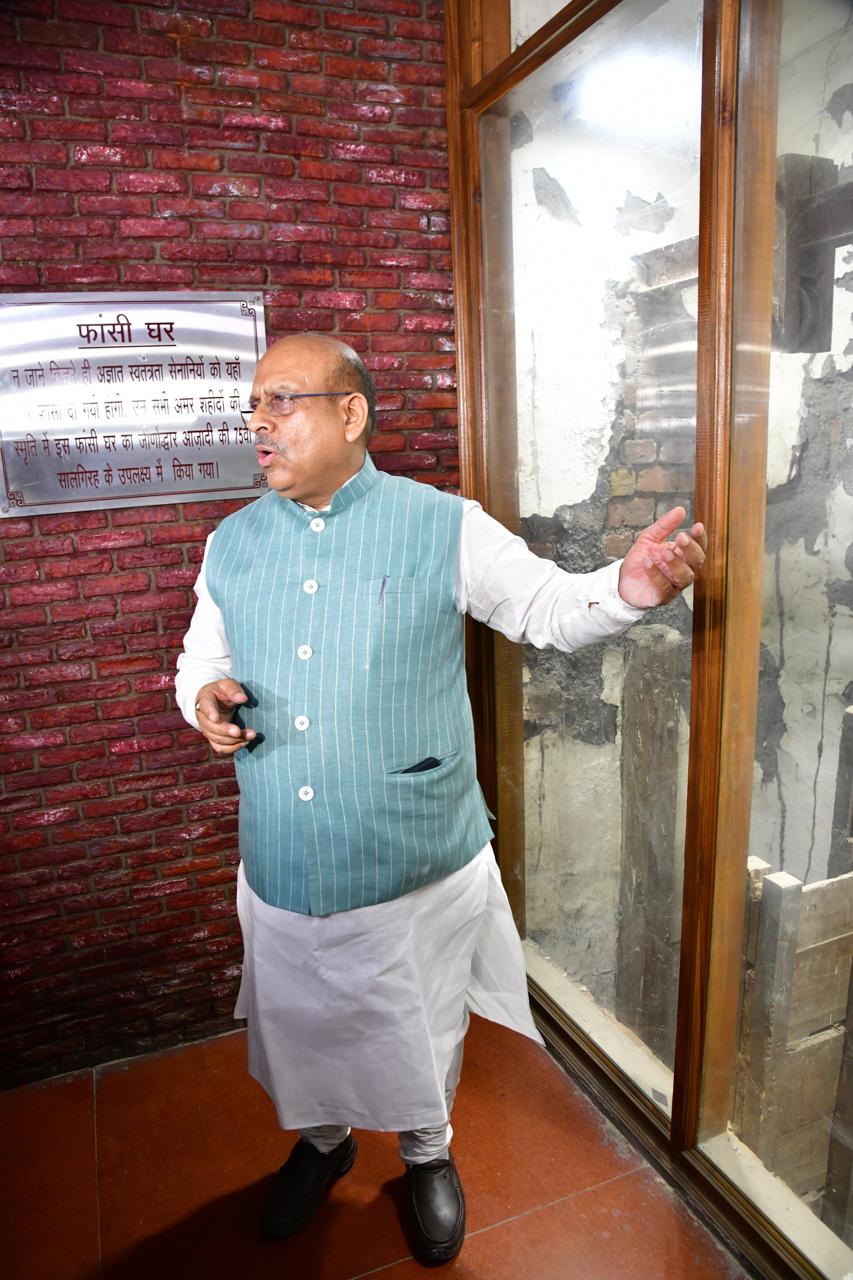“There is no history of any such space. There was never an execution room here,” stated Hon’ble Speaker of the Delhi Legislative Assembly, Vijender Gupta, as he led a guided tour for media personnel to a location within the Assembly premises that had been misrepresented as a “fansi ghar” (gallows room). The visit sought to set the record straight and present a factual understanding of the space.

Further Gupta stated that the House embodies a rich weaving heritage and holds significant historical relevance.

As part of the tour, Gupta also narrated the remarkable historical journey of the Delhi Legislative Assembly building—an enduring symbol of the nation’s constitutional and architectural heritage. Gupta recalled that the history dates back to 11 December 1911, when, at the Coronation Durbar of King George V, the then Viceroy of India announced the historic decision to transfer the Imperial Capital from Calcutta to Delhi. This move necessitated the creation of a new Secretariat and Council Chamber for the Imperial Legislative Council, reconstituted under the Morley-Minto Reforms of 1909.
The present Assembly chamber, he noted, was constructed in 1912 and completed in a record span of eight months under the supervision of contractor Faqir Chand. Designed by British architect E. Montague Thomas, the building was initially intended for the Imperial Legislative Council and later housed the Central Legislative Assembly after 1919. The original architectural drawings are preserved today in the National Archives of India.
During the tour, the Speaker highlighted distinctive features of the structure, including two identical colonial-era lift shafts positioned at equal distances from the Speaker’s Room—both designed to deliver tiffin boxes to members. These service rooms, he emphasized, have been incorrectly portrayed as “gallow house”—a claim without any archival basis.
“This building is not just 115 years old; it is a living testament to India’s political evolution,” Shri Gupta said. “From the decision to shift the capital to Delhi, to the crafting of this chamber in record time, its history must be told with accuracy and reverence.”
Speaker further remarked that the issue at hand would be formally deliberated upon in the House, where all facts and perspectives could be placed on record. Until such a discussion takes place, he said, it would be inappropriate for him to offer further public comment. He, however, expressed serious concern over the fact that crores of rupees in public funds had been expended in erroneously projecting this heritage structure as something it never was—an act he described as both misleading and wasteful, undermining the very principles of historical accuracy and responsible stewardship of public resources.

Concluding the tour, Hon’ble Speaker Vijender Gupta emphasized the need for historical integrity in all representations of heritage sites, particularly within legislative and constitutional institutions. “It is our responsibility to ensure that the legacy of a building like the Delhi Legislative Assembly is portrayed with accuracy and respect,” he stated. “Only through truthful representation can future generations engage with our history meaningfully, free from distortion or myth.” He reaffirmed the Assembly’s resolve to preserve and present its institutional heritage with authenticity and accountability.


